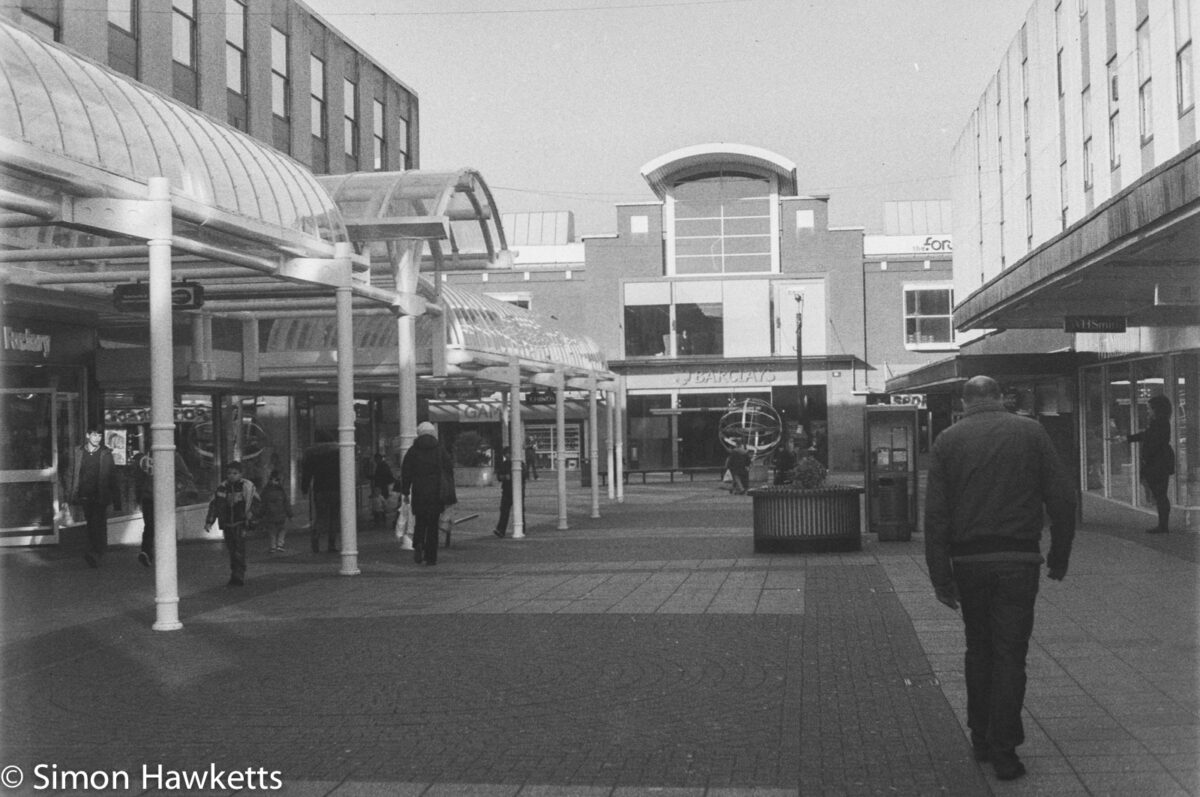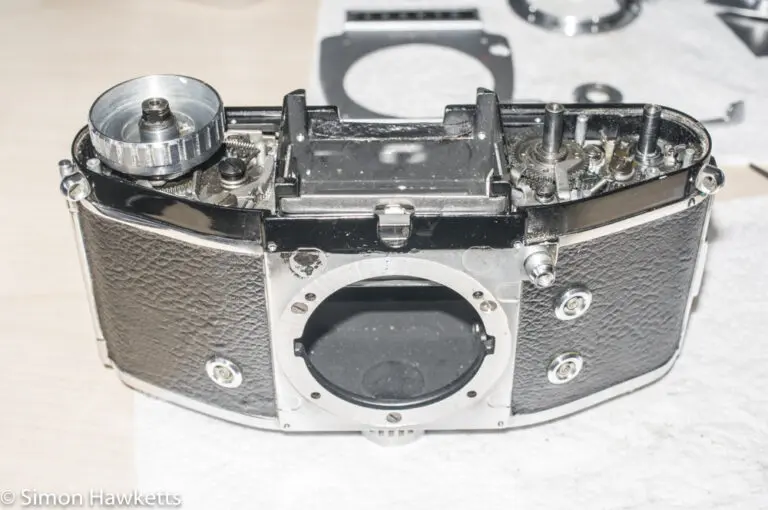Fujica stx-1, Fomapan 200 and Caffenol C-M
I first tried caffenol a couple of months ago and had limited success, mostly because the Agfa daylight tank I was using didn’t load correctly, so I ended up with a section of film which didn’t get developed. My next attempt was a bit more successful, because at least all the images got developed, but I still had problems, I think because the images were underdeveloped. So, determined to have another go, I loaded a fujica stx-1 which I recently acquired with a roll of Fomapan 200 and had a walk around Stevenage taking some trial shots.
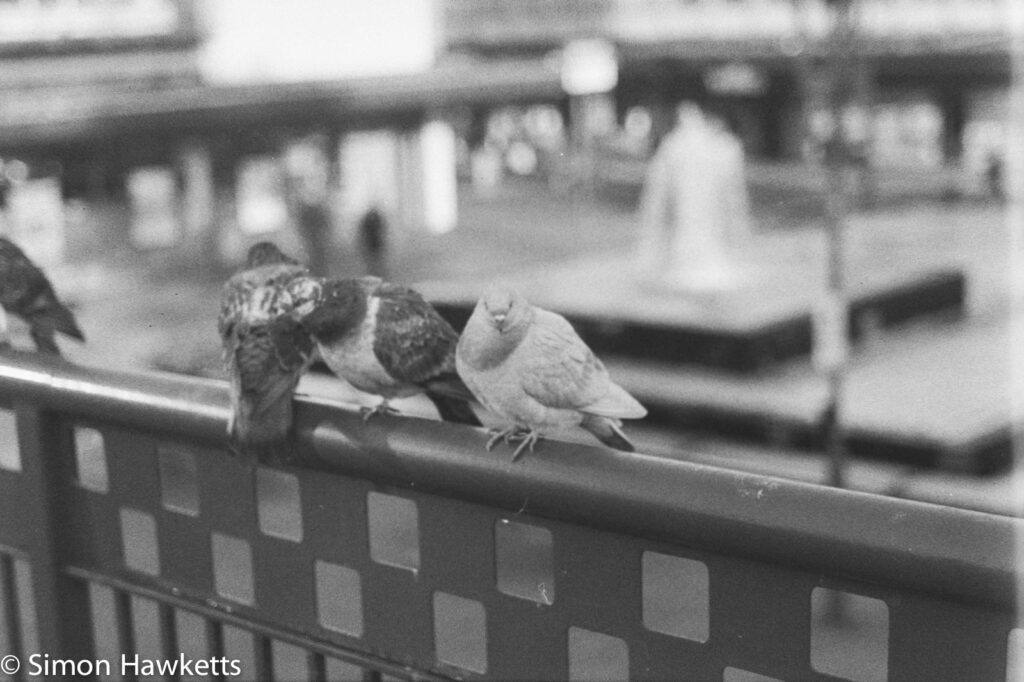
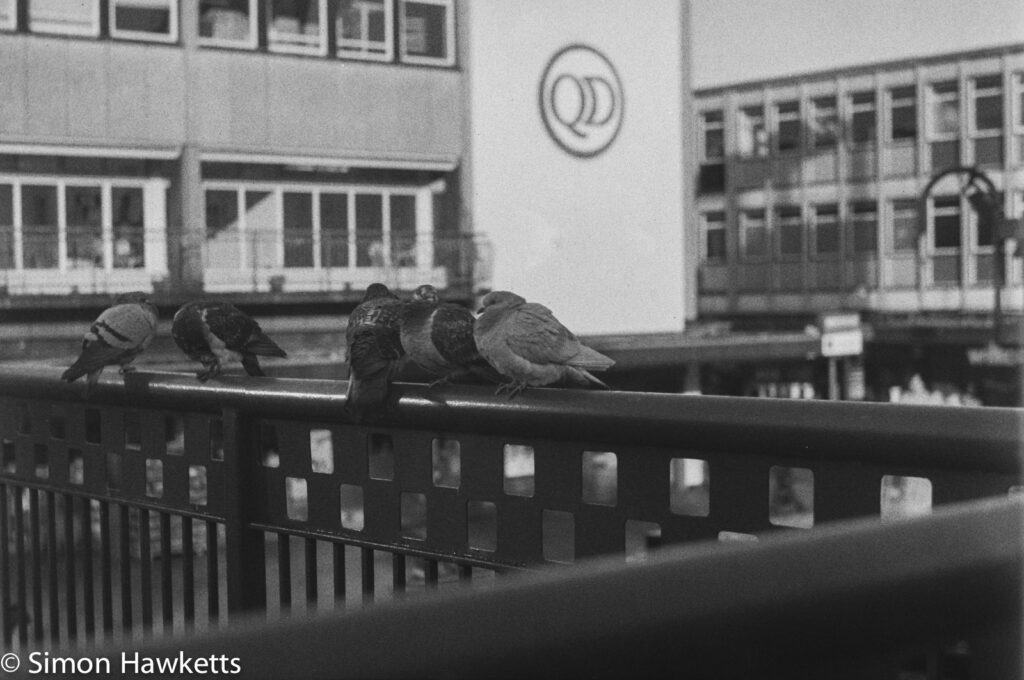
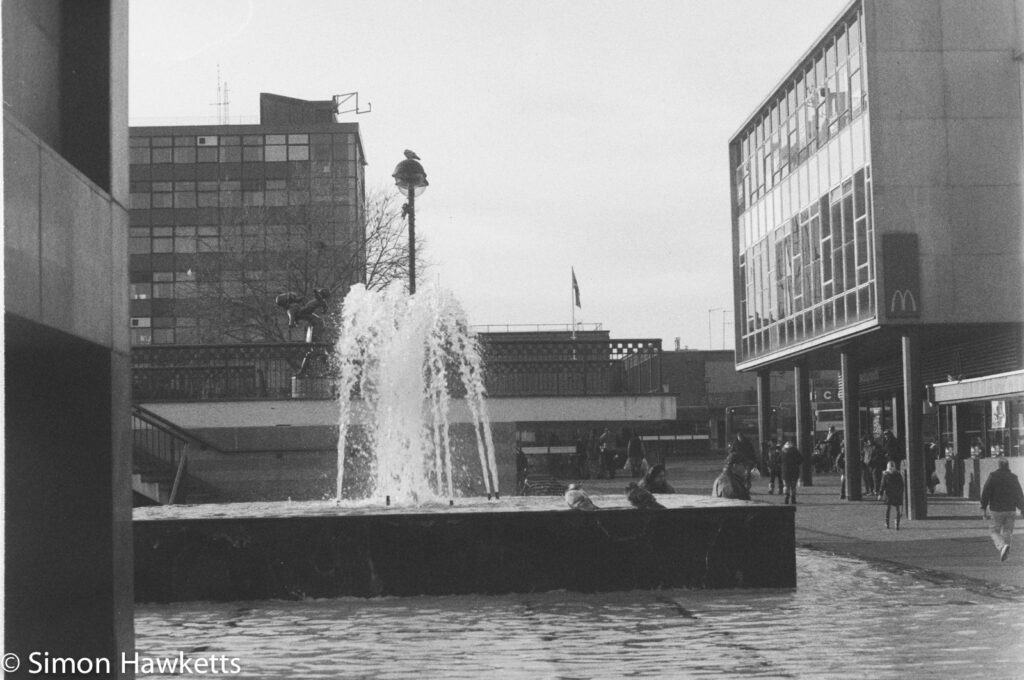
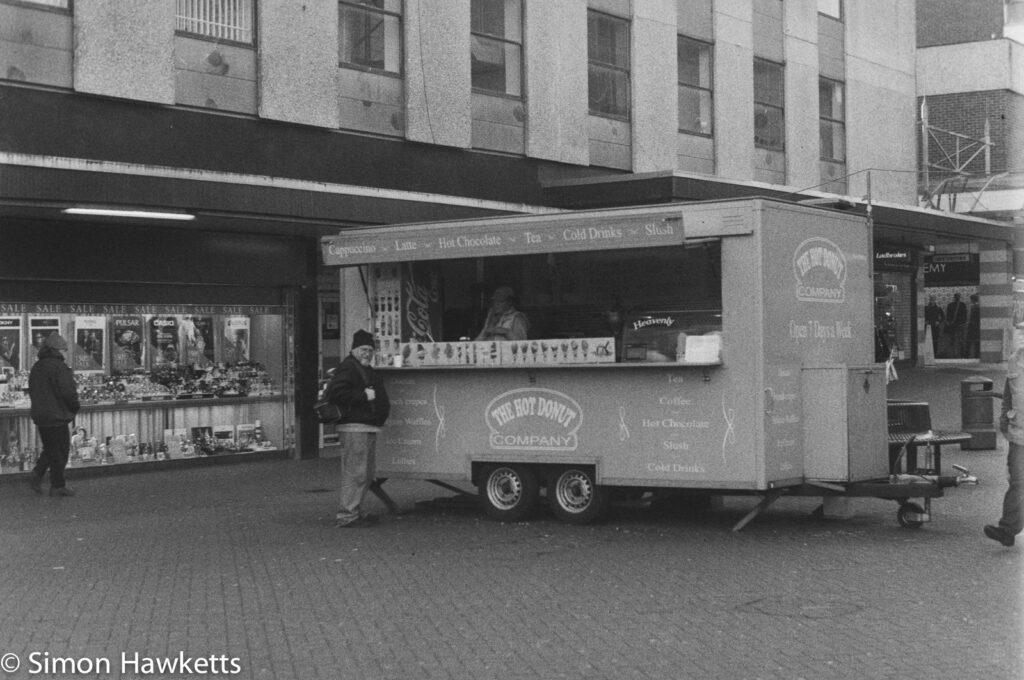
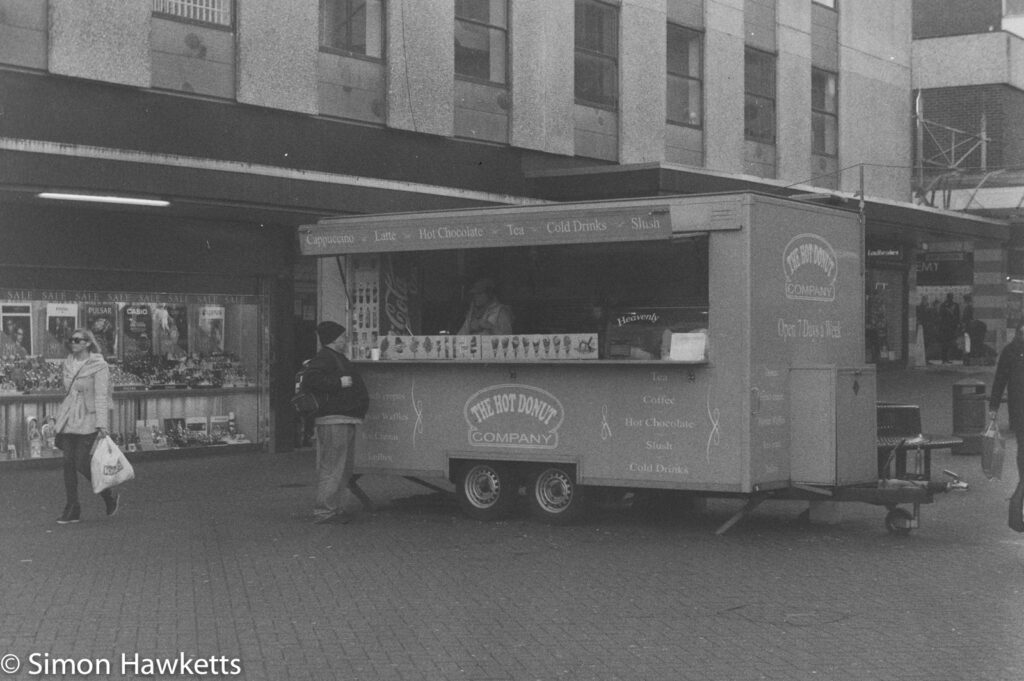

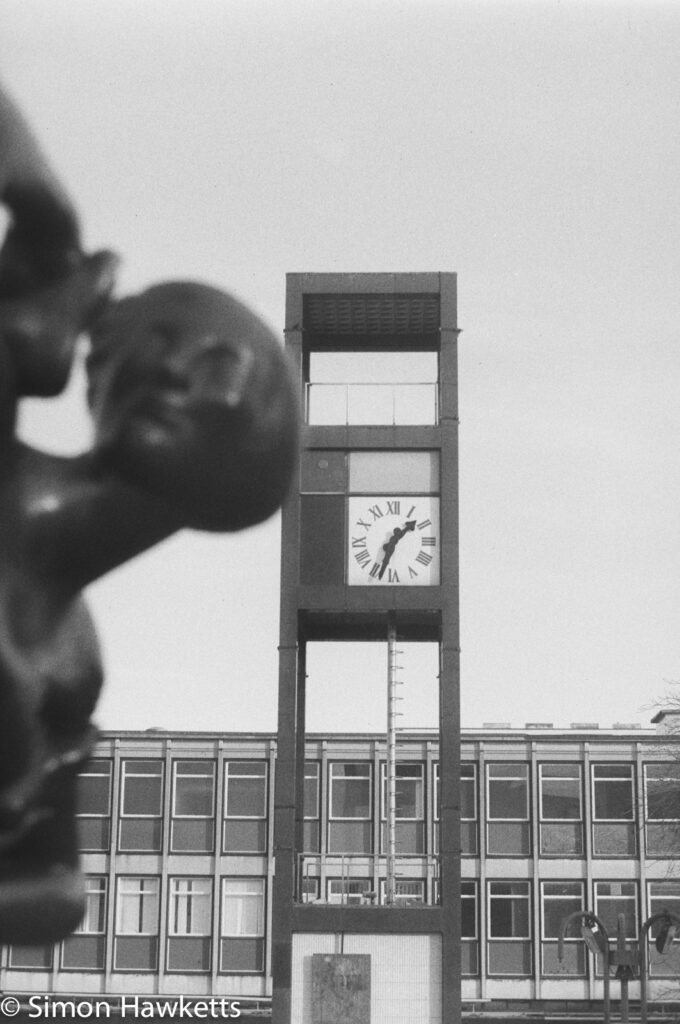
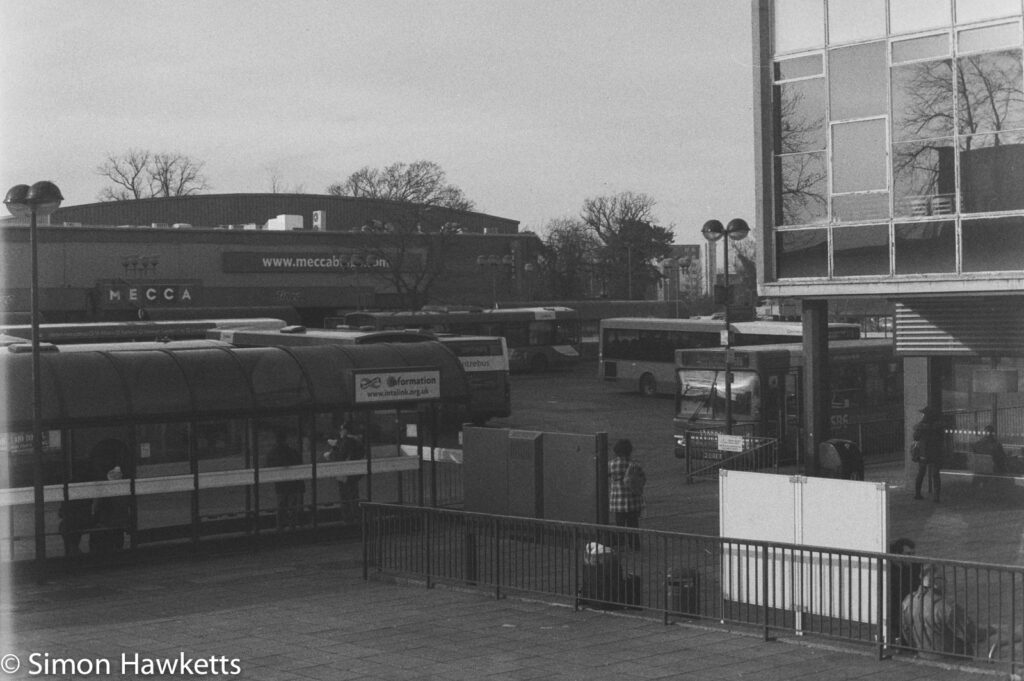
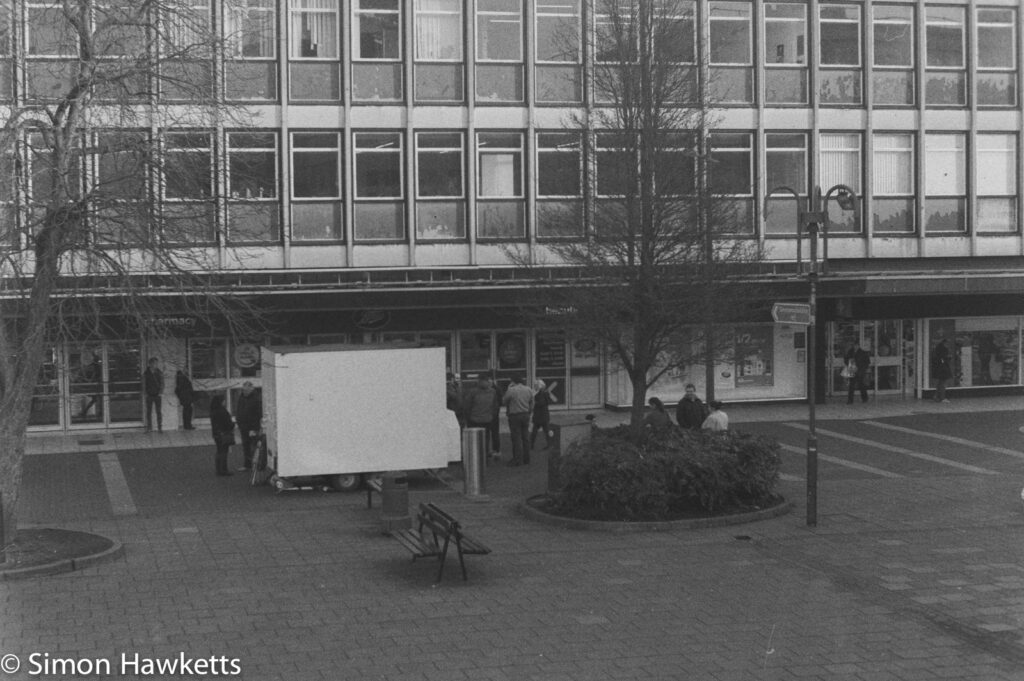

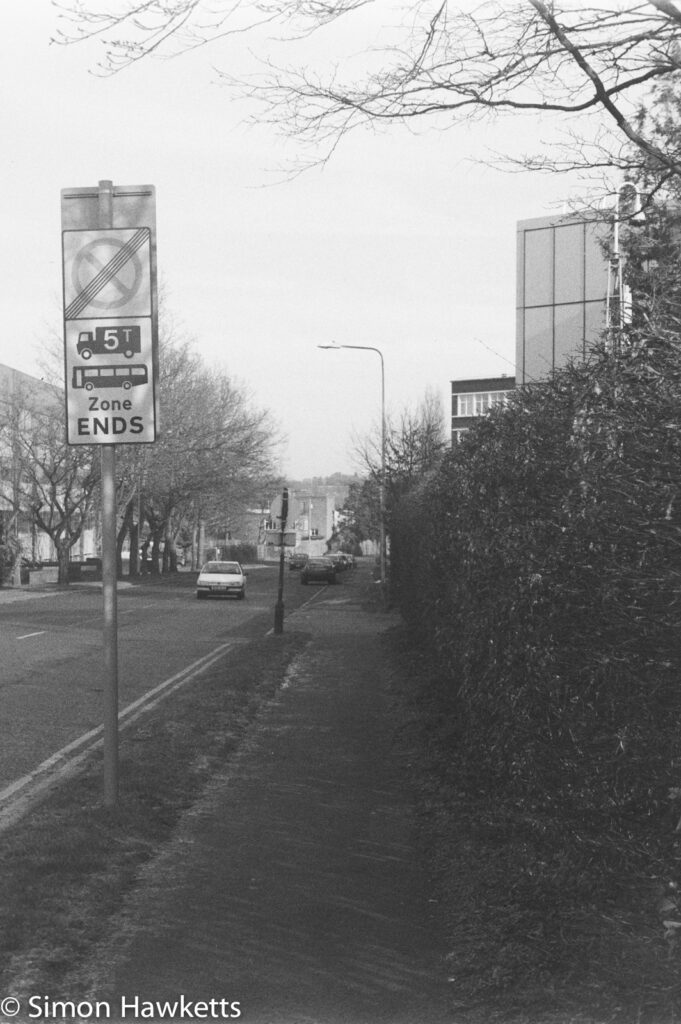
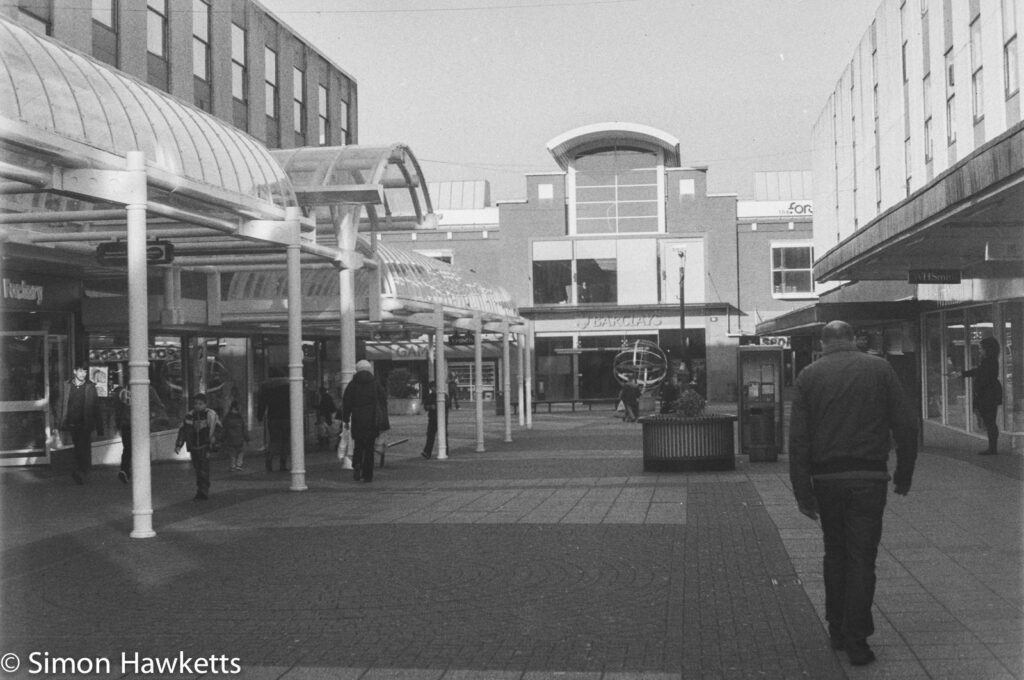
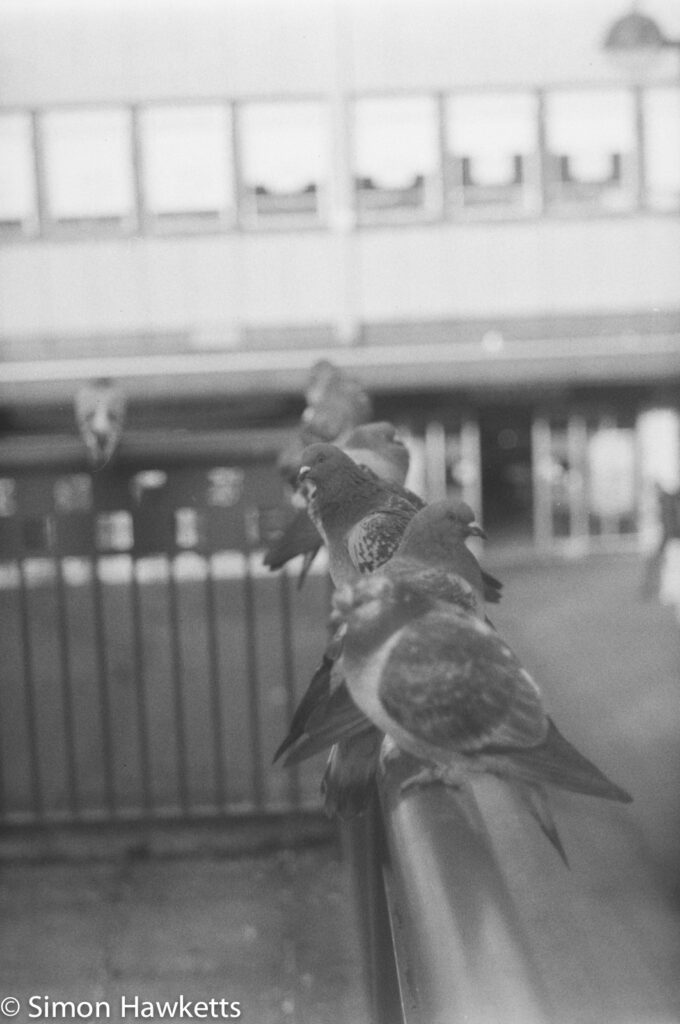
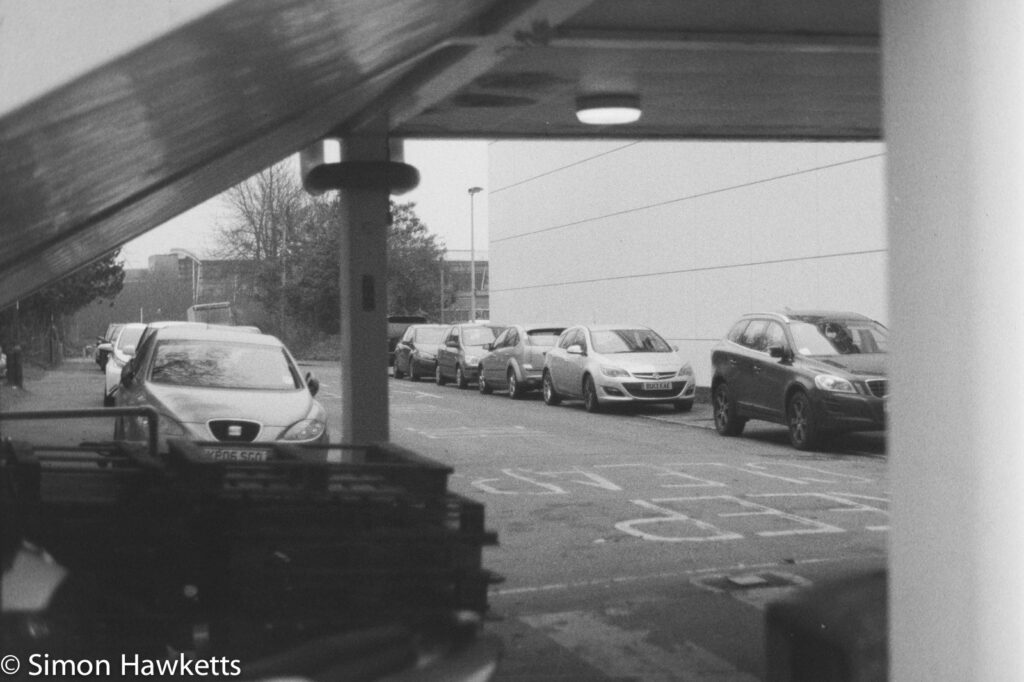
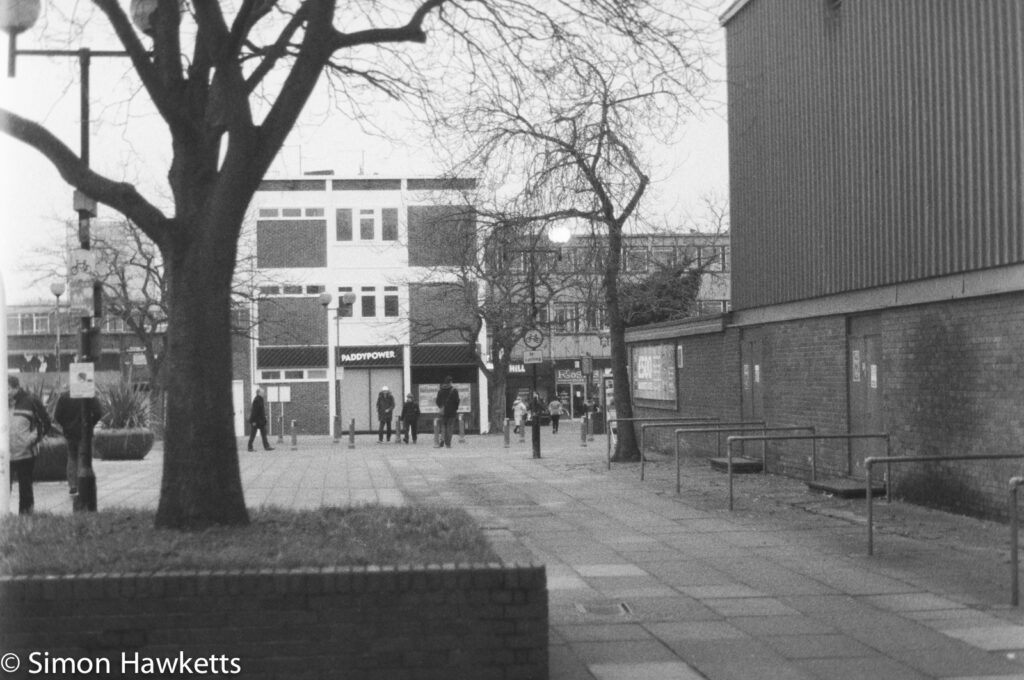
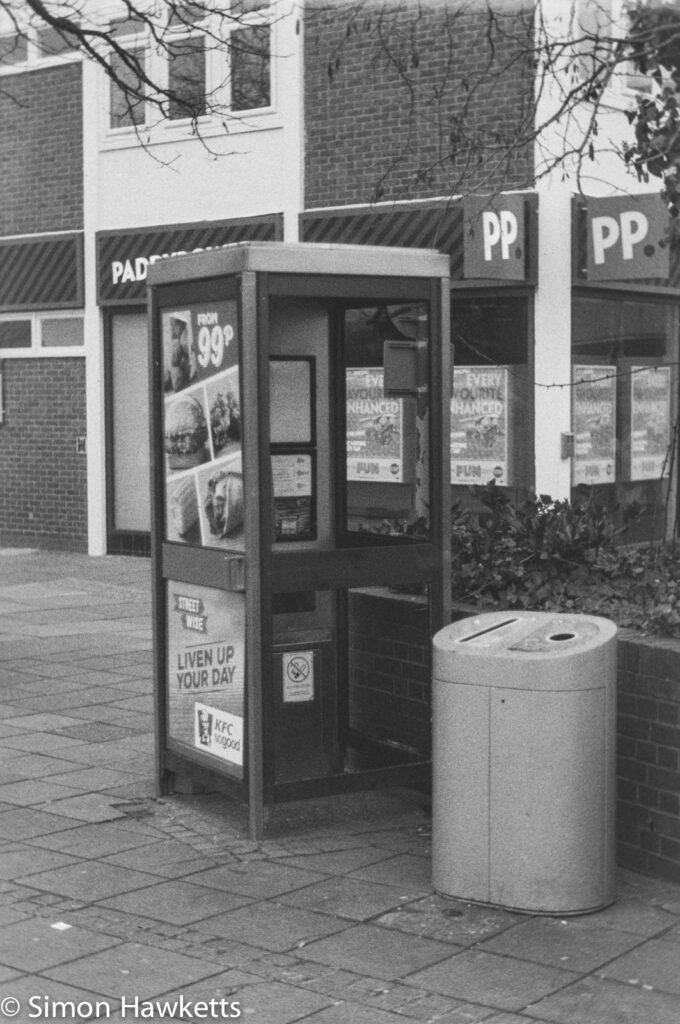
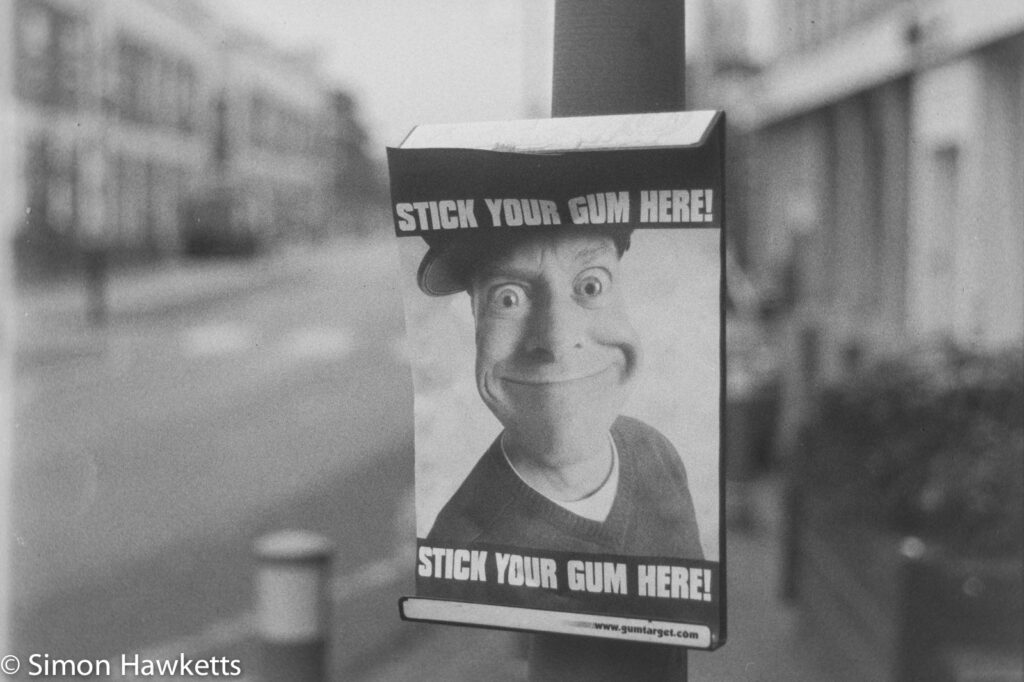
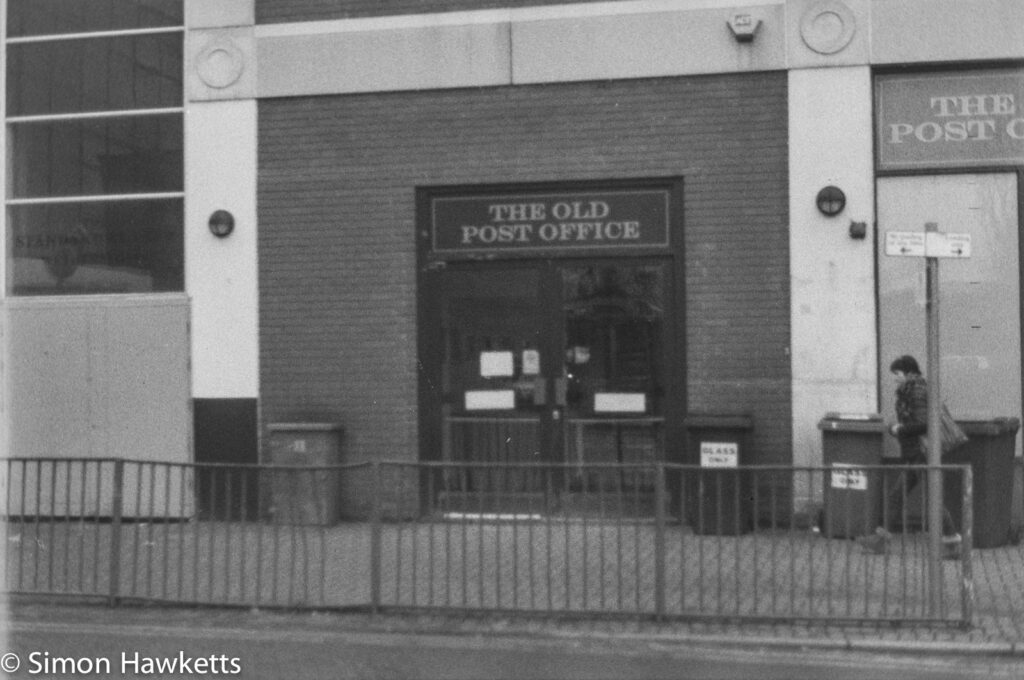
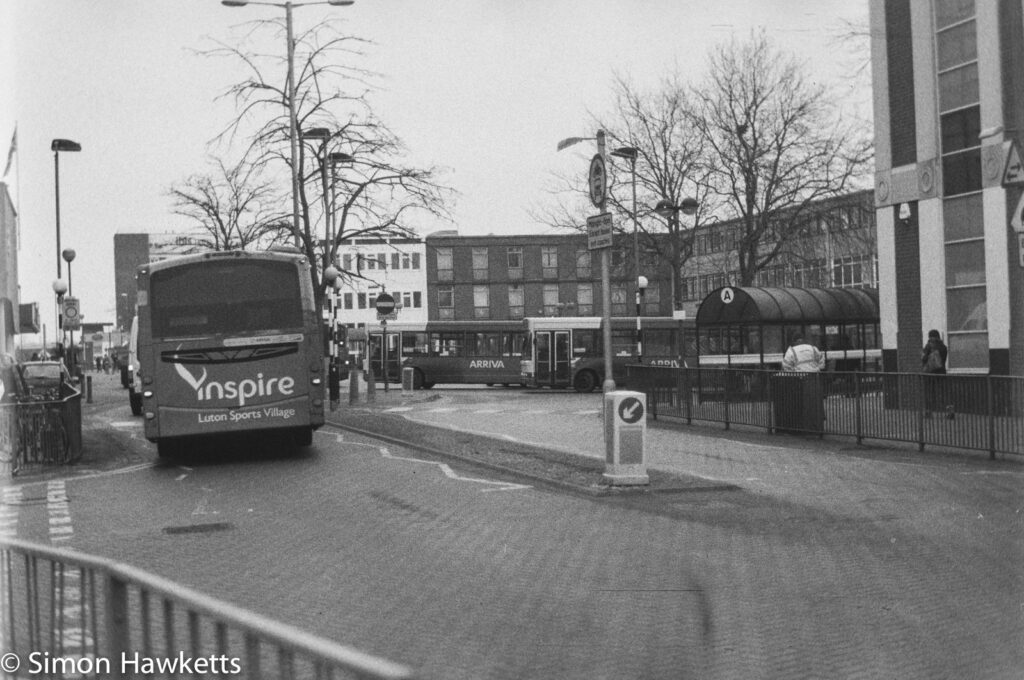
For this set of images, I used the same Caffenol C-M recipe which I used for the last two experiments, but this time I tried a longer development time of 15 minutes. On this occasion, once the development was complete, and I removed the film from the tank, the images on the film looked pretty good, but when scanned on our HP Photosmart C8100 they once again came out completely awful, with very low contrast and were almost completely unrecoverable in Lightroom. I think that our scanner is working out the ‘exposure’ by averaging across the whole filmstrip, so if one frame is incorrectly exposed, the whole strip suffers.
So I tried duplicating the film using a slide duplicator and had much more success, although there are still issues which need to be sorted out.
The biggest problem with the duplication method is that my slide duplicator doesn’t have a filmstrip holder, so I have to position the film in the slide carrier and hold it at best I can whilst I take the picture. Because I want to maximize the depth of field, I normally use about f/8 which results in quite long exposure times. In itself that doesn’t matter if the film is being held securely in a filmstrip holder, but it is a bit hairy when I’m holding it with my fingers!
Once I had the pictures duplicated and on a memory card, I imported them into Lightroom. I then set them to black & white to remove the slightly sepia tone in the duplicated image, and reversed the image using the Lightroom tone curve tool. Each image had to be individually cropped from the duplicated picture which was too large, and had a bit of exposure correction (about 1/2 stop).
Although these are better than either of my other experiments with caffenol, I obviously have a long way to go before I get excellent, fine grain high contrast images. Still, as long as each attempt gets better, I suppose that is progress!
Discover more from Everything Vintage
Subscribe to get the latest posts sent to your email.

